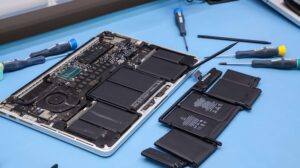As semiconductor technology advances, the demand for higher performance and miniaturization continues to push the boundaries of chip design. One of the most promising approaches to meeting these demands is 3D semiconductor packaging, which involves stacking multiple Integrated Circuits (ICs) vertically. This method significantly increases processing power and efficiency without expanding the device footprint. However, implementing 3D packaging comes with several manufacturing challenges that require advanced techniques and meticulous process control. Erik Hosler, a pioneer in advanced semiconductor manufacturing techniques, highlights that understanding and addressing these challenges is essential for the successful adoption of 3D packaging in high-performance applications.
While 3D packaging offers numerous benefits, including improved performance and space efficiency, it also introduces complexities related to thermal management, interconnect reliability and yield optimization. Addressing these challenges requires a combination of innovative materials, precision engineering and robust quality control systems.
Economic and Cost Implications
The challenges associated with 3D semiconductor packaging can have significant economic impacts. Managing thermal issues and interconnect reliability requires specialized materials and advanced cooling solutions, which increase production costs. Yield optimization efforts can be costly, as defective layers or bonding errors often result in scrapped components.
High defect rates directly affect profitability, making it crucial for manufacturers to invest in automated quality control and precision alignment systems. By minimizing errors and enhancing production consistency, companies can reduce waste and maintain cost efficiency.
Thermal Management Challenges
One of the most significant challenges in 3D semiconductor packaging is managing heat dissipation. Stacking multiple ICs increases power density, which leads to thermal hotspots. If not properly managed, excessive heat can degrade performance or cause device failure. Advanced cooling techniques are essential for maintaining reliable operation.
Manufacturers are exploring innovative thermal solutions such as microfluidic cooling systems and integrated heat spreaders. Another approach involves using high thermal conductivity materials like graphene to enhance heat transfer between stacked layers. Implementing these techniques requires precise engineering to ensure effective integration without compromising chip performance.
Interconnect Reliability Issues
Maintaining reliable interconnects between stacked layers is critical for ensuring signal integrity. In 3D packages, high-density interconnects can suffer from stress-related failures, especially if the materials used have different thermal expansion coefficients. This mismatch can cause cracking or delamination over time.
To address this, manufacturers are using flexible interconnect materials and incorporating stress-absorbing layers that buffer thermal expansion. Advanced bonding techniques such as hybrid copper-to-copper bonding improve mechanical stability while maintaining high signal quality.
Yield Optimization in 3D Packaging
Achieving high yield rates in 3D semiconductor packaging is challenging due to the complexity of aligning and bonding multiple layers. Even minor misalignments can result in functional failures or reduced performance. Automated alignment systems that use machine vision are being developed to enhance accuracy during the stacking process.
Another aspect of yield optimization is defect detection. Early identification of defects during fabrication can prevent costly failures later. Advanced inspection technologies such as X-ray tomography and automated optical inspection (AOI) are integral to maintaining high yield rates in 3D packaging.
Advanced Quality Control Techniques
Maintaining consistent quality in 3D packaging is challenging due to the intricate nature of multi-layer integration. Manufacturers are increasingly using real-time monitoring systems to detect process deviations. Techniques such as in-situ metrology allow for immediate adjustments during fabrication, reducing the likelihood of defects.
AI-driven analytics also help predict potential failures. By analyzing data from previous production runs, manufacturers can identify patterns that indicate alignment issues or bonding inconsistencies. This proactive approach helps maintain quality while minimizing material waste.
Material Compatibility and Integration
Choosing compatible materials for 3D packaging is crucial for ensuring stability and performance. Incompatible materials can lead to delamination, thermal cycling issues or compromised electrical connectivity. To mitigate these risks, manufacturers conduct extensive compatibility testing focusing on thermal expansion, mechanical flexibility and conductivity.
Researchers are also exploring composite materials that combine flexibility with durability. These materials help maintain structural integrity while accommodating the thermal stresses inherent in 3D architectures.
Collaborative Research Initiatives
To overcome the challenges of 3D packaging, semiconductor manufacturers are partnering with research institutions. Collaborative projects focus on developing advanced bonding materials that resist thermal stress and improve electrical conductivity. These partnerships also facilitate the testing of novel interconnect designs under simulated operational conditions.
Such collaborations are crucial for accelerating innovation. By pooling resources and expertise, companies can tackle common challenges more effectively while sharing the insights gained from experimental results.
Real-World Case Studies and Industry Adoption
Leading semiconductor manufacturers are actively addressing these challenges through collaborative research and development. For instance, a prominent chip maker has developed a hybrid bonding technique that reduces thermal resistance and enhances interconnect reliability. This innovation has been successfully applied in AI accelerators and High-Performance Computing (HPC) devices.
In the mobile sector, where compactness and performance are critical, 3D packaging has been implemented in flagship smartphones to improve processing speed and battery efficiency. By optimizing thermal management and interconnect design, manufacturers have minimized the risk of overheating and signal degradation.
Sustainability Considerations
Efficient 3D packaging methods contribute to sustainability by reducing material usage and energy consumption. Compact designs minimize the number of raw materials needed per unit, while integrated cooling solutions lower the power requirements for maintaining optimal performance. As the industry strives to reduce its carbon footprint, adopting efficient packaging methods is becoming increasingly important.
By investing in sustainable materials that enhance both thermal management and structural integrity, companies can reduce electronic waste and improve the environmental impact of semiconductor manufacturing.
As 3D packaging technology advances, manufacturers are seeking new methods to enhance reliability and performance. Erik Hosler points out, “Accelerator technologies, particularly in ion implantation, are enabling manufacturers to push the limits of miniaturization while maintaining the integrity of semiconductor devices.” Precision engineering plays a central role in addressing the complex challenges of miniaturization, thermal management, and material compatibility. Continued innovation in advanced packaging solutions is essential to meeting performance demands while ensuring long-term device reliability in increasingly compact architectures.
Navigating the Complexities of 3D Packaging
3D semiconductor packaging is redefining the capabilities of modern electronics, but the path to reliable and efficient production is complex. Addressing challenges related to thermal management, interconnect reliability and yield optimization requires ongoing innovation and collaboration within the semiconductor industry.
As manufacturers develop new materials and advanced process control techniques, the potential for 3D packaging to support high-performance applications will continue to grow. By investing in research and addressing key manufacturing obstacles, companies can unlock the full potential of 3D integrated circuits, ensuring that future devices meet the demands of performance-driven applications.




